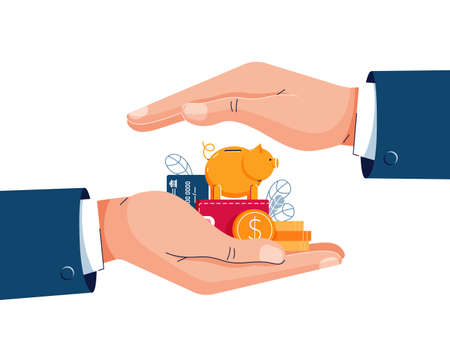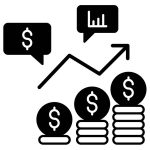1. Understanding the Burden of Debt
Debt can feel like a heavy chain, holding you back from financial freedom and peace of mind. It affects not just your bank account but also your overall well-being. Understanding the true impact of debt is the first step toward breaking free.
How Debt Impacts Your Financial Well-Being
When youre in debt, a significant portion of your income goes toward paying interest rather than building wealth. This can limit your ability to save, invest, or even cover emergency expenses. Below is a comparison of financial stability with and without debt:
| Financial Aspect | With Debt | Without Debt |
|---|---|---|
| Savings Potential | Limited due to payments | More opportunities to save |
| Investment Opportunities | Difficult due to financial strain | Easier access to investments |
| Emergency Preparedness | Lack of funds for unexpected expenses | Able to handle emergencies smoothly |
| Financial Stress Level | High due to constant payments | Lower with financial security |
The Mental and Emotional Toll of Debt
Debt doesn’t just affect your finances—it impacts your mental health too. Many people experience anxiety, stress, and even depression due to overwhelming financial obligations. Here are some common emotional effects of debt:
(1) Stress and Anxiety
The pressure of monthly payments and accumulating interest can lead to constant worry about making ends meet.
(2) Relationship Strain
Financial struggles often cause tension between partners, family members, and even friends.
(3) Reduced Quality of Life
Lack of disposable income can prevent you from enjoying experiences such as vacations, hobbies, or dining out.
(1) Recognizing the Importance of Breaking Free from Debt
The key to achieving financial independence is understanding why eliminating debt is crucial. Being debt-free allows you to regain control over your money, reduce stress, and build a secure future.
2. Assessing Your Financial Situation
Before you can break free from debt, you need to have a clear understanding of your current financial situation. This involves evaluating your income, tracking your expenses, and listing all outstanding debts. By doing this, youll gain a realistic picture of where you stand financially and identify areas for improvement.
Understanding Your Income
Your income is the foundation of your financial health. Start by calculating your total monthly income from all sources, including:
- Salary or wages
- Freelance or side hustle earnings
- Investment income
- Government benefits
- Any other sources of income
Tracking Your Expenses
The next step is to examine how much money youre spending each month. Categorizing your expenses helps you see where your money is going and identify potential areas to cut back. Use the table below to organize your monthly expenses:
| Category | Estimated Amount ($) |
|---|---|
| Housing (Rent/Mortgage) | |
| Utilities (Electricity, Water, Internet, etc.) | |
| Transportation (Gas, Public Transit, Insurance) | |
| Groceries & Dining | |
| Debt Payments (Credit Cards, Loans) | |
| Savings & Investments | |
| Entertainment & Subscriptions | |
| Miscellaneous Expenses |
Listing Your Outstanding Debts
A crucial part of assessing your financial situation is identifying all outstanding debts. Make a list that includes:
(1) Creditor Name
The name of the bank, lender, or institution you owe money to.
(2) Total Balance Owed
The total amount you still need to pay off.
(3) Minimum Monthly Payment
The least amount you must pay each month to avoid penalties.
(4) Interest Rate (%)
The percentage rate charged on the remaining balance.
You can organize this information in a simple table like this:
| Lender/Creditor | Total Balance ($) | Minimum Payment ($) | Interest Rate (%) |
|---|---|---|---|
| [Creditor Name] | [Balance] | [Payment] | [Rate] |
| [Creditor Name] | [Balance] | [Payment] | [Rate] |
| [Creditor Name] | [Balance] | [Payment] | [Rate] |
Analyzing the Results
Once youve gathered all this information, take a step back and analyze it. Ask yourself:
- Are you spending more than you earn?
- Which expenses can be reduced or eliminated?
- Are there debts with high interest rates that should be prioritized?
- How much money can be allocated toward debt repayment each month?
This assessment will serve as the foundation for creating a strategic plan to eliminate debt and achieve financial freedom.

3. Creating a Debt Repayment Plan
Paying off debt can feel overwhelming, but having a structured plan makes it manageable. By using proven strategies like the snowball and avalanche methods, you can systematically reduce your debt while staying motivated. Let’s explore how these approaches work and how you can choose the best one for your financial situation.
Snowball vs. Avalanche Method
The two most popular debt repayment strategies are the snowball and avalanche methods. Each has its own advantages, so selecting the right one depends on your personal preferences and financial goals.
| Method | How It Works | Best For |
|---|---|---|
| Snowball Method | Pay off the smallest debt first while making minimum payments on others. Once the smallest debt is cleared, move to the next smallest. | People who need quick wins to stay motivated. |
| Avalanche Method | Pay off the debt with the highest interest rate first while making minimum payments on others. This minimizes overall interest paid. | People who want to save the most money in interest over time. |
(1) Steps to Create Your Debt Repayment Plan
No matter which method you choose, creating a clear plan will keep you on track. Follow these steps to develop an effective strategy:
(1) List All Your Debts
Create a detailed list of all your debts, including credit cards, personal loans, student loans, and any other outstanding balances. Include the balance, interest rate, and minimum monthly payment for each.
(2) Choose Your Repayment Strategy
Select either the snowball or avalanche method based on what keeps you most motivated—whether that’s seeing quick progress or minimizing interest payments.
(3) Allocate Extra Payments
If possible, budget extra money each month to put toward your target debt. Even small additional payments can accelerate your progress significantly.
(4) Automate Payments
Set up automatic payments to ensure you never miss a due date. Consistency is key to reducing your debt efficiently.
(5) Track Your Progress
Regularly review your progress to stay motivated. Celebrate small victories along the way—each paid-off balance brings you closer to financial freedom!
4. Building Better Financial Habits
Breaking free from debt isnt just about paying off what you owe—its also about creating strong financial habits that prevent you from falling back into the cycle of debt. By developing smart spending habits, building an emergency fund, and adopting effective budgeting techniques, you can secure a debt-free future.
Develop Smart Spending Habits
One of the key steps to achieving financial stability is learning how to spend wisely. Here are some simple ways to develop better spending habits:
(1) Differentiate Between Needs and Wants
- Before making a purchase, ask yourself if it’s something you truly need or just something you want.
- Create a 24-hour rule for non-essential purchases—wait a day before deciding to buy.
(2) Use Cash or Debit Instead of Credit
- Paying with cash helps you stay within your budget since you can physically see how much youre spending.
- If using a credit card, only charge what you can pay off in full at the end of the month.
(3) Take Advantage of Discounts and Coupons
- Use apps or websites that offer cashback or discounts on everyday purchases.
- Buy in bulk when possible to save money on essentials.
Build an Emergency Fund
An emergency fund acts as a financial safety net, helping you avoid taking on new debt when unexpected expenses arise. Here’s how you can start building one:
| Step | Description |
|---|---|
| (1) Set a Savings Goal | Aim for at least three to six months worth of living expenses in your emergency fund. |
| (2) Start Small and Stay Consistent | If saving a large amount seems overwhelming, begin with $10-$20 per paycheck and gradually increase. |
| (3) Keep It Separate | Store your emergency fund in a dedicated savings account that is not easily accessible for daily spending. |
| (4) Automate Your Savings | Set up automatic transfers from your checking account to ensure consistent contributions. |
Adopt Effective Budgeting Techniques
A well-planned budget ensures that your income covers your needs while allowing room for savings and discretionary spending. Consider these budgeting techniques:
(1) The 50/30/20 Rule
- 50% Needs: Essentials like rent, utilities, groceries, and insurance.
- 30% Wants: Entertainment, dining out, travel, and hobbies.
- 20% Savings & Debt Repayment: Emergency funds, retirement savings, and extra debt payments.
(2) Zero-Based Budgeting
- This method assigns every dollar of income to a specific category so that no money is left unallocated.
- If you earn $3,000 per month, all $3,000 should be planned for expenses, savings, and debt repayment.
(3) Envelope System
- This cash-based budgeting technique involves setting aside money in labeled envelopes for different expense categories (e.g., groceries, gas, entertainment).
- If an envelope runs out of cash before the next payday, avoid spending more in that category until it’s replenished.
Cultivating better financial habits takes time and effort, but by being mindful of your spending, saving for emergencies, and using smart budgeting methods, youll create a strong foundation for long-term financial success.
5. Achieving Long-Term Financial Freedom
Breaking free from debt is a significant milestone, but true financial freedom goes beyond just being debt-free. To secure your financial future, its essential to invest wisely, build savings, and create a sustainable financial plan that ensures long-term stability.
How to Invest Wisely
Investing is a powerful tool for growing your wealth over time. By making informed investment choices, you can ensure your money works for you. Here are some key investment principles:
(1) Diversify Your Investments
Don’t put all your money into one type of investment. A diversified portfolio reduces risk and increases potential returns.
(2) Understand Risk Tolerance
Assess how much risk youre comfortable taking. Stocks offer higher returns but come with volatility, while bonds provide stability but lower growth.
(3) Take Advantage of Retirement Accounts
Maximize contributions to retirement accounts like 401(k)s or IRAs to benefit from tax advantages and compound growth.
Building and Increasing Your Savings
Savings provide financial security and help you handle unexpected expenses without falling back into debt. Follow these strategies to boost your savings:
(1) Establish an Emergency Fund
Aim to save at least three to six months worth of living expenses in an easily accessible account.
(2) Automate Savings Contributions
Set up automatic transfers to your savings account so you consistently save without needing to think about it.
(3) Cut Unnecessary Expenses
Review your spending habits and eliminate costs that dont add value to your life.
| Savings Goal | Recommended Action |
|---|---|
| Emergency Fund | Save 3-6 months’ worth of expenses |
| Retirement Savings | Contribute regularly to 401(k) or IRA |
| Short-Term Goals | Create a separate savings fund for vacations, home repairs, etc. |
Creating a Sustainable Financial Future
A strong financial foundation ensures that you not only stay out of debt but also continue building wealth over time. Here’s how:
(1) Live Below Your Means
Avoid lifestyle inflation by keeping expenses lower than your income, even as you earn more.
(2) Set Long-Term Financial Goals
Create clear objectives such as homeownership, early retirement, or starting a business.
(3) Keep Learning About Personal Finance
The financial world changes constantly—stay informed about new investment opportunities and money management strategies.

